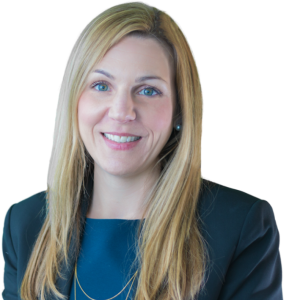
On April 6, 2016, New York became the fifth state in the nation to pass paid family leave legislation. Enacted as part of the 2016-2017 State Budget, New York’s Paid Family Leave Benefits Law (“PFFL” or “Paid Family Leave Law”) will eventually provide eligible employees with up to twelve (12) weeks of paid family leave
benefits, funded wholly by employees through payroll deductions. Under the new law, employee payroll
deductions are scheduled to commence, and benefits become available to eligible employees, as of January 1, 2018.
Summary—The Paid Family Leave Law expands New York’s Workers’ Compensation Law to provide paid
family leave benefits to eligible employees of covered employers. Family leave benefits under the new Law will be administered through state-approved insurance policies and funded by the premiums paid for those policies. Unlike temporary disability benefits, however, employers are not required to contribute any portion of the family leave premiums or “fund any portion of the family leave benefit.” Instead, employees alone are responsible for funding the family leave premiums through mandatory contributions of about one dollar per week per employee, which employers may collect through payroll deductions.
Scope—The Paid Family Leave Law applies to any employer that is currently covered under the Disability
Benefits Law. Employees of covered employers are generally eligible for paid family leave benefits after twenty-six (26) or more consecutive weeks of employment.
Benefits—Under the PFFL, eligible employees are entitled to up to twelve (12) weeks paid leave per year to (i) care for a family member with a serious physical or mental condition, (ii) bond with a biological, adoptive, or foster child within the first year of the child’s birth or placement with the employee, or (iii) fulfill family obligations arising when a spouse, domestic partner, child, or parent is on or called to active military duty. Between January 1, 2018 and January 1, 2021 the maximum allowable paid family leave benefits will
gradually increase from eight (8) weeks of leave at fifty percent (50%) of employees’ average weekly wages to twelve (12) weeks of leave at sixty-seven percent (67%) of average weekly wages. Eligible employees are not permitted to collect paid family leave benefits simultaneously with temporary disability benefits, workers’ compensation disability payments, or sick pay or paid time off from employers.
Employee Protections—The Paid Family Leave Law prohibits covered employers from discharging, failing to reinstate, or otherwise discriminating against an employee for taking or attempting to claim paid family leave benefits. Upon a return from paid family leave, employers are generally required to reinstate employees to actual or comparable positions with comparable benefits, pay and other terms of employment. During any period of paid leave taken by employees, employers must maintain employees’ existing health benefits. In addition, while employees are not entitled to the accrual of any benefits during any paid leave period, they are entitled to maintain all employment benefits accrued prior to any such period.
Taking of Leave—The PFFL grants covered employers discretion to implement certain policies that may offset some of its impact. For example, employers are permitted to implement policies requiring eligible employees to take paid family leave under the PFFL concurrently with any unpaid leave to which the employee may be entitled under the Family and Medical Leave Act of 1993. Employers may also implement policies preventing related employees from taking paid family leave to care for the same family member at the same time. Further, as a condition of initial receipt of paid family leave benefits, employers may require employees to elect whether to receive the statutory benefits (i.e., between 50 and 67% of the employee’s average weekly wage) or receive full pay in exchange for charging all or part of the family leave time against accrued but unused vacation or personal days. If an employee elects to receive full pay, the employer must pay the employee during the family leave period but is entitled to reimbursement from its insurance carrier out of any family leave benefits due the employee.
Employers and human resources professionals should familiarize themselves with this legislation and any forthcoming regulations well in advance of January 1, 2018. To ensure compliance with the law and provide protections in the event of a lawsuit or regulatory audit, handbooks and policies may need to be reviewed and revised, and appropriate insurance coverage may need to be secured. Penalties for noncompliance may include, among others, fines and criminal liability. Employers, both small and large, may wish to consult counsel to assist with these efforts.
1 Unless an employer is self-insured, both temporary disability benefits and paid family leave benefits will be covered under the same policy. See PFFL § 23(8).
2 PFFL § 209(3)(B).
3 Id.
4 N.Y. Workers’ Comp. L. § 201.
5 PFFL § 203. However, employees “regularly in the employment of a single employer on a work schedule less than the employer’s normal work week” become eligible for benefits on the one hundred seventy-fifth (175th) day of such
regular employment. Id.
6 PFFL §§ 201(15); 203.
7 PFFL § 204(2)(A).
8 PFFL § 205(3), (4).
9 PFFL § 203-A; N.Y. Workers’ Comp. L. §§ 140; 241.
10 PFFL § 203-B.
11 PFFL § 203-C.
12 PFFL § 203-B.
13 PFFL § 206.
14 Id.
15 PFFL § 205; see also § 206(C).
16 PFFL § 237.
990 Stewart Avenue, Suite 300,
Garden City, NY 11530
750 Ninth Street, Suite 501
Washington, D.C. 20001
Phone(202) 887-6726Fax:(202) 223-0358


